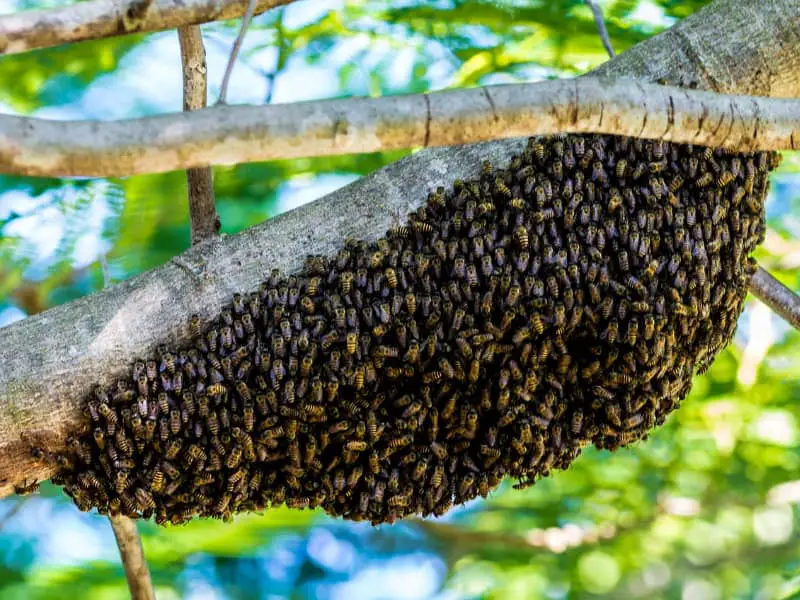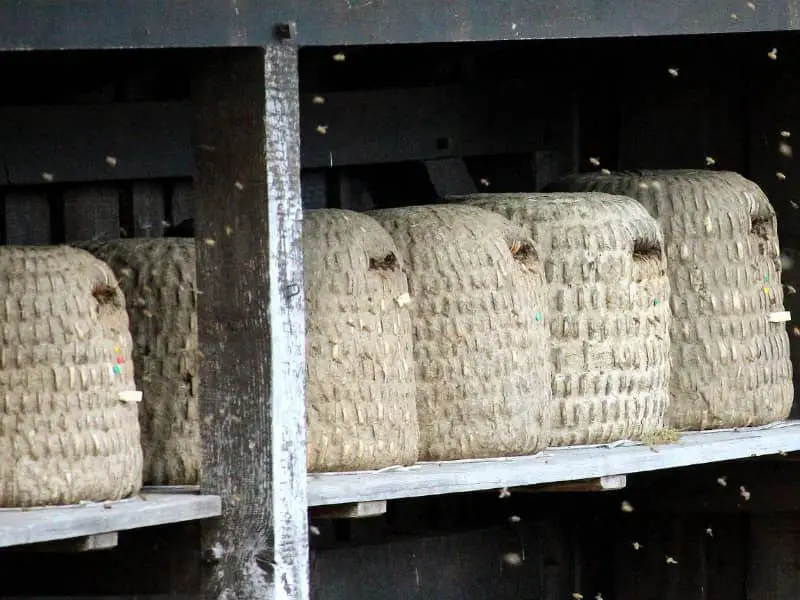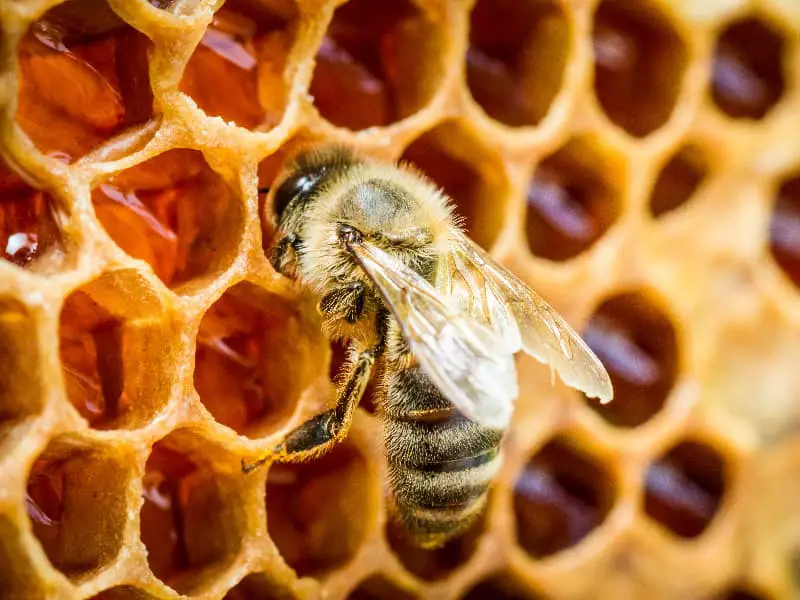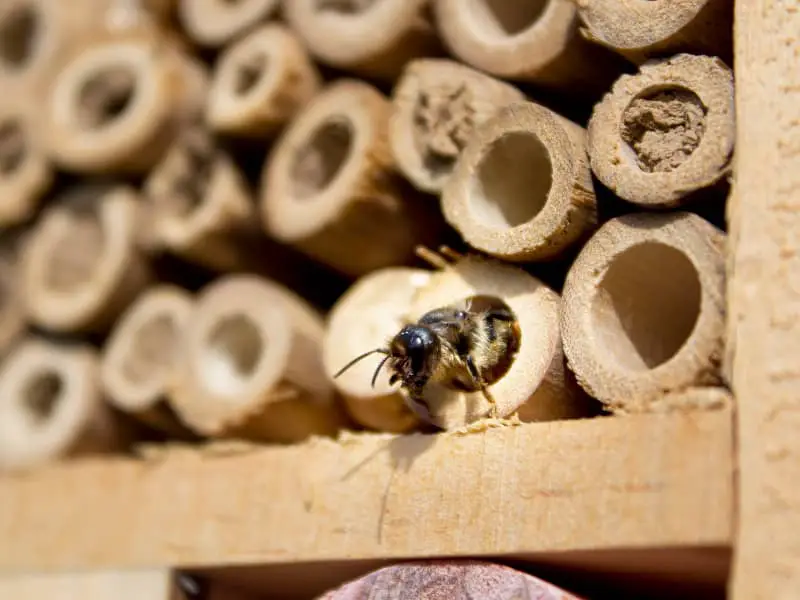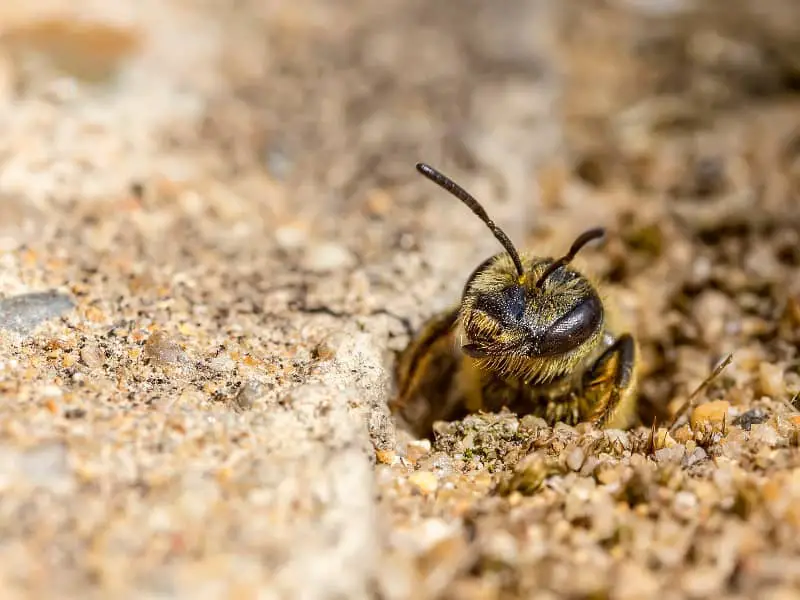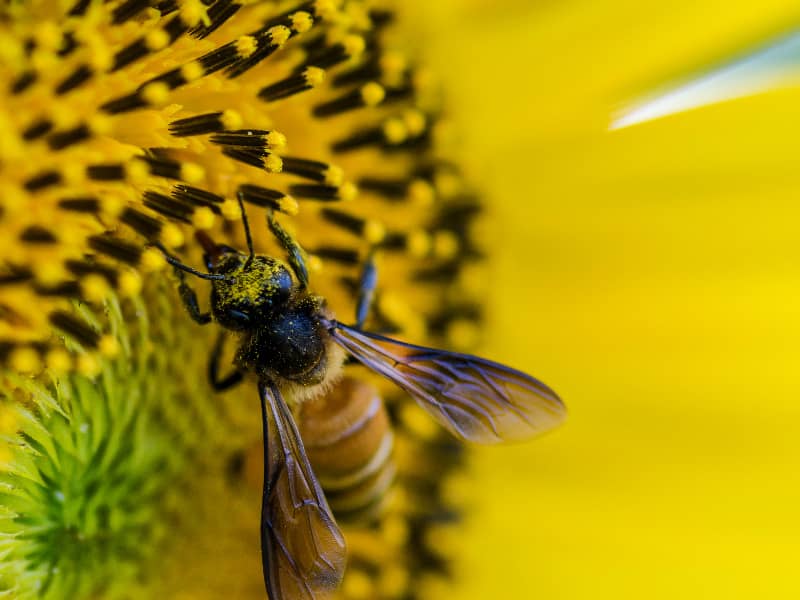
Late bloomers for bees
In the world of bees, the choice of flowers plays a crucial role, especially when it comes to ensuring that they find enough food throughout the year. In this blog post, we'd like to take an in-depth look at late bloomers for bees and why these plants are so important. We will also give practical tips on how you can make your garden bee-friendly.
- Late bloomers for bees
- Importance of late bloomers for bees
- Why late bloomers are important for bees
- Preservation of the bee population
- Biology of bees
- Types of late bloomers for bees
- Native late bloomers for bees
- Exotic late bloomers for bees
- Late bloomers for bees - planting and care
- Top 10 late bloomers for bees in Germany
- Autumn anemone (Anemone hupehensis)
- Marshmallow (Althaea officinalis)
- Late goldenrod (Solidago gigantea)
- Chinese asters (Callistephus chinensis)
- Autumn aster (Aster novi-belgii)
- Black elderberry (Sambucus nigra)
- Purple coneflower (Echinacea purpurea)
- Indian Nettle (Monarda)
- Yarrow (Achillea millefolium)
- Autumn Timothy (Colchicum autumnale)
- Late bloomers for bees on balconies and terraces
- Combinations of late bloomers
- Late bloomers for bees - cost and profitability
- Conclusion: bee-friendly late bloomers
Importance of late bloomers for bees
Bees are not only industrious pollinators, but they also play a key role in our ecosystem. When we think of bees, the spring and summer months often come to mind, when most plants are in full bloom. But what happens in late summer and fall? This is exactly where late bloomers come into play.
These plants are an important food source for bees, especially when most other flowers have already faded. By providing nectar and pollen in late summer and fall, late bloomers can help stabilize bee populations and promote biodiversity.
Aim of the blogpost
The main goal of this blog post is to raise awareness about the importance of late bloomers in terms of food for bees. We would like to provide concrete tips on which plants are suitable late bloomers and how they can best be cared for. In addition, the blog post is intended to encourage people to make their own contribution to the protection of bees by making their garden or balcony bee-friendly.
Overview of the topics
In this article, we address various aspects of the topic. These include the biology of bees, the importance of late bloomers to the ecosystem, and specific instructions for selecting, planting, and caring for bee-friendly late bloomers. We will also discuss the benefits to humans and economic aspects. All to give you a comprehensive overview of the exciting and important topic of late bloomers for bees.
Why late bloomers are important for bees
When it comes to supporting bees, late bloomers are more than just decorative elements in a garden. They are essential for the survival of these beneficial insects and have many other benefits as well.
Preservation of the bee population
Bees are responsible for pollinating a wide variety of plants, which in turn is important for food production. Unfortunately, bee populations are declining worldwide. By providing late bloomers in your own garden or on your balcony, you can actively contribute to the protection of bees.
Late bloomers such as coneflowers, asters, or autumn anemones provide food for bees even in the late seasons when other flower sources have already been depleted. This helps the bees to enter the cold months stronger and thus maintain the population.
Extension of the food sources
Bees depend on different food sources throughout the year. Early bloomers in spring, summer bloomers in mid-summer, and of course late bloomers in late summer and fall. Each of these phases is critical to the bees' food supply. Late bloomers expand the supply of nectar and pollen, ensuring a continuous food supply.
This is particularly important because bees need to build up food reserves for the winter and are thus in urgent need of late food sources.
Increase biodiversity
Planting late blooming plants contributes not only to the well-being of honeybees, but also to many other insect species. A diverse range of flowering plants promotes biodiversity and helps create a healthy and stable ecosystem. Late-blooming plants attract butterflies, bumblebees and other beneficial insects in addition to bees. This is a positive side effect that enriches and stabilizes the entire natural environment.
Biology of bees
A deeper understanding of bee biology can help to better understand why late bloomers are so important to them. From their feeding habits to their annual cycle, there are many factors that should be considered.
Diet
Bees are known for their diligent work as pollinators, but they themselves also need food in the form of nectar and pollen. Nectar provides them with the energy they need in the form of sugar, while pollen contributes important proteins and fats. Late-blooming plants are an important resource in this regard. They allow bees to balance their diet and prepare for the less fertile months. Without a balanced diet, bees could develop health problems, which would negatively affect the entire colony.
Flight pattern
Bees are very goal-oriented fliers and their flight patterns are strongly influenced by the availability of food sources. They usually find enough food in spring and summer, but it becomes scarcer in late summer and fall. Late bloomers help fill this gap. They allow bees to use their energy to efficiently forage and collect nectar and pollen without having to travel long distances.
Annual cycle
Bees have a complex life cycle that changes throughout the year. In winter, they are less active and the majority stay in the hive to prepare for the next season. So late bloomers are especially important for providing bees with enough food to get them through the winter months. By planting late-blooming plants, we can actively help bees get through the winter well and be full of energy again in the spring.
Types of late bloomers for bees
There are many different types of plants that can be considered late bloomers. Depending on your garden, your tastes, and your needs, you can choose from a variety of plants. In this section, we'll cover three main categories of late bloomers: annuals, perennials, and trees and shrubs.
Annual plants
Annual plants are those that germinate, flower and bear fruit within a year. These plants are often easy to sow and care for, but they must be replanted each year. Some examples of annual late bloomers are zinnias, marigolds and the jewelweed. They often bloom until the first frost and provide bees with an ongoing food source. What's especially handy is that you can rearrange them each year to add variety to your garden.
Perennials
Perennials are plants that live several years and often bloom annually. They are ideal for gardeners who are looking for a permanent solution. Examples of late-blooming perennials include asters, autumn anemones and coneflowers. These plants can remain in the same garden bed for years, providing a reliable food source for bees. Their longevity also makes them a cost-effective choice for long-term garden planning.
Trees and shrubs
Some trees and shrubs can also function as late bloomers. Examples include cornelian cherry and certain species of willow. These plants are important not only for their flowers, but also for their structure. They provide wind protection for bees and are an ideal place for nests. However, they require more space and are therefore more suitable for larger gardens. Planting late-blooming trees and shrubs is a longer-term investment, but it has the advantage of providing a very permanent food source for bees.
Native late bloomers for bees
Native plants are an attractive option for many gardeners, especially when it comes to supporting bees and other pollinators. They are often well adapted to the local climate and soil and offer specific benefits in terms of native wildlife.
Site selection
When choosing native late bloomers, you should keep the location in mind. Different plants have different requirements for soil conditions, light conditions and water needs. Native plants have the advantage that they are often less demanding because they are adapted to local conditions. Nevertheless, make sure that the plants you choose are suitable for the intended location in your garden. This not only promotes the growth of the plants, but also facilitates their care.
Variety
The diversity of native late bloomers is often surprisingly large. From different types of asters to late-flowering wild herbs such as common evening primrose or common sage, there are many options. By having a high diversity of varieties, you can not only provide visual variety in your garden, but also attract different pollinators. This diversity of plants has a positive effect on the entire ecosystem and promotes biodiversity.
Influence on the native fauna
Planting native late bloomers has a direct positive impact on local wildlife. Native plants are often the preferred food source for local bee species and other pollinators. By planting these plants, you are supporting not only the honeybee, but many other often neglected insect species. This contributes to the stability of the local ecosystem and helps maintain biodiversity.
Exotic late bloomers for bees
Exotic plants can bring a touch of elegance and uniqueness to your garden. However, it is important to consider some factors before choosing exotic late bloomers, especially in terms of their environmental compatibility and specific requirements for cultivation.
Advantages and disadvantages
Exotic late bloomers can undoubtedly have an aesthetic appeal and serve as eye-catchers in your garden. They are often more colorful or have unusual shapes that native plants lack. However, they tend to be less resistant to native pests and diseases because they are not adapted to the local ecosystem. Likewise, they may have special care requirements that are difficult to meet in your climate.
Ecological considerations
Exotic plants can potentially become invasive and displace native plant species. Even though they provide nectar and pollen, they are not necessarily adapted to the needs of native wildlife. Therefore, you should think carefully and educate yourself before planting exotic late bloomers. This will ensure that they are not only harmless, but also beneficial to native pollinators.
Growing conditions
Light, soil and water requirements can vary greatly for exotic plants. Some require special soils or precise watering to thrive. They may also need special protection against cold or disease.
So before you choose an exotic plant, check to see if you can meet the necessary conditions in your garden. Nothing is more frustrating than investing a lot of time and effort in a plant only to find out that it is not suitable for your garden.
Late bloomers for bees - planting and care
A thoughtful garden of late-blooming plants requires careful planning and maintenance. From choosing the right location to seeding and ongoing maintenance, there is much to consider to ensure your plants not only survive, but thrive.
Choosing the right location
Choosing the right location is a crucial first step. Some late bloomers prefer full sun locations, while others are happy with partial shade. Soil type and quality can also play a role, especially for more demanding exotic species. To choose the best location for your late bloomers, you should consider the specific needs of each plant species. This way you can ensure that they are optimally supplied with nutrients, light and water.
Sowing and growing
Sowing and growing late bloomers varies by species. Annuals can often be sown directly in the field, while perennials and shrubs may need to be grown in pots first. It is also important to choose the right time to sow or plant so that the plants have enough time to become strong and hardy before they bloom. Some plants may additionally need a cold shock or a period of drought to promote germination.
Maintenance and care
Maintenance of late-blooming plants requires regular monitoring for signs of disease or pest infestation, especially if they are more sensitive or exotic species. Some plants may benefit from regular fertilization, while others may be sensitive to too many nutrients. Watering is another important consideration, as both over- and under-watering can be problematic. Last but not least, occasional pruning can be helpful in keeping plants healthy and encouraging them to bloom.
Top 10 late bloomers for bees in Germany
If you live in Germany and want to make your garden more bee-friendly, there are many native and hardy plants that excel as late bloomers. These plants provide important food sources for bees and other pollinators, especially when many other plants have already faded. Here is a list of the top 10 bee-friendly late bloomers that thrive in Germany:
Autumn anemone (Anemone hupehensis)
- Flowering time: August - October
- Location: Partial shade to sun
- Soil: Humic and well drained
Marshmallow (Althaea officinalis)
- Flowering time: July - September
- Habitat: Sun to partial shade
- Soil: Sandy-loamy
Late goldenrod (Solidago gigantea)
- Flowering time: August - September
- Location: Sun
- Soil: Dry to moderately moist
Chinese asters (Callistephus chinensis)
- Flowering time: August - October
- Location: Sun
- Soil: Nutrient-rich
Autumn aster (Aster novi-belgii)
- Flowering time: September - October
- Location: Sun
- Soil: Well drained
Black elderberry (Sambucus nigra)
- Flowering time: May to June, fruits in late summer
- Habitat: Sun to partial shade
- Soil: Uncomplicated
Purple coneflower (Echinacea purpurea)
- Flowering time: July - September
- Location: Sun
- Soil: Well-drained, nutrient-rich
Indian Nettle (Monarda)
- Flowering time: July - September
- Habitat: Sun to partial shade
- Soil: Moist, well drained
Yarrow (Achillea millefolium)
- Flowering time: June to October
- Location: Sun
- Soil: Dry to moderately moist
Autumn Timothy (Colchicum autumnale)
- Flowering time: September - October
- Location: Partial shade
- Soil: Humic, well drained
I hope this list gives you a good starting point for selecting the best late bloomers for your garden in Germany. They are all not only pretty to look at, but also provide important food sources for bees and other pollinators in the late season.
Late bloomers for bees on balconies and terraces
Not everyone has the luxury of a large garden, but that doesn't mean you can't still help protect bees. Balconies and patios provide valuable space for late-blooming plants that attract bees and other pollinators. Here are some tips and considerations for selecting, placing and caring for such plants in limited spaces.
Plant selection
When choosing late flowering plants for balcony or terrace, you should consider several factors. First and foremost, the size of the available space is important. Some plants, like autumn anemones, can do well in smaller pots, while others, like marshmallow, need more space. Second, you should pay attention to light conditions. Some plants need a lot of sun, while others can get by with less. Finally, it's wise to choose plants that do well in your climate and are hardy, in case you want to leave them outside through the cold season.
Space saving variants
When space is at a premium, there are several creative solutions to still accommodate a variety of late-blooming plants. Vertical planting systems, also known as "green walls," can be a great way to make the most of space. Hanging baskets and window boxes are other space-saving options. Plants such as purple coneflower and autumn aster do well in smaller pots, making them ideal for limited spaces.
Late bloomers for bees - care tips
Care for late flowering plants on the balcony or terrace is not fundamentally different from the care in the garden, but there are some peculiarities. Pots usually dry out faster than garden soil, so regular watering is important. Also consider fertilizing the plants; a slow-release fertilizer can be a good solution here. Finally, it is advisable to check the plants regularly for pests and diseases, as these can spread more quickly in a smaller space.
With these tips, you should be able to turn your balcony or patio into a bee-friendly oasis that not only looks good, but also helps maintain the pollinator population.

Combinations of late bloomers
Although individual late-blooming plants can already do a lot for the local bee population, their effect is potentiated if you skillfully combine different species. Combining different late bloomers can not only create aesthetically pleasing flower arrangements, but also ecosystems that are especially beneficial to bees and other pollinators. You can learn more about this here.
Flower mixtures
Flower mixes are an easy way to establish a variety of plants in your garden or on your balcony. Special "bee mixes" are often composed to include a range of plants that complement each other in flowering time and requirements. This provides a continuous food supply for bees over an extended period of time. Make sure the mix contains plants that thrive in your region.
Advantages of the combination
The combination of different late bloomers has several advantages. On the one hand, it extends the flowering period and thus the food supply for bees. Secondly, it promotes biodiversity, as different pollinators are attracted to different plant species. Finally, plants can support each other in their growth. For example, some plants can keep out pests that would harm other plants.
Examples of successful combinations
- Autumn aster and autumn anemone: These two plants bloom at the same time, providing a longer food source. They also cope with similar soil conditions.
- Yarrow and late goldenrod: Both are not only hardy and easy to care for, but also attract many different types of pollinators.
- Purple coneflower and Indian nettle: Not only do these two plants look wonderful growing side by side, but their flowering times overlap, providing a longer attraction to bees.
With well-designed combinations of late bloomers, you can thus both enhance the visual appeal of your garden and increase its biodiversity and usefulness to pollinators.
Late bloomers for bees - cost and profitability
While the main focus of growing late-blooming plants is often on the environmental benefits, don't discount the economic aspects. Because yes, it can be an investment to make your garden or balcony bee-friendly. However, there are also many financial benefits that can justify this initial investment.
Acquisition costs
The initial cost of late-blooming plants can vary widely. Some plants, such as autumn asters or coneflowers, can be had quite inexpensively at many nurseries. More exotic or rare plants, however, can run into money. There are also costs for soil, fertilizer, and possibly planters if you don't have a garden. It's worth comparing prices and possibly also looking for good deals at local plant swap meets.
Yield and benefit
The "yield" from growing late-blooming plants is not to be measured in monetary terms, of course, but in the benefits these plants bring to bees and other pollinators. However, a well-pollinated garden can also increase the yield of fruit and vegetable crops, which can save money in the long run. In addition, such plants contribute to overall biodiversity and can promote ecological balance in the garden, which in turn can reduce the need for pest control.
Long-term advantages
A bee-friendly garden is not only a contribution to environmental protection, but can also be the basis for other ecological projects. The attraction to bees and other pollinators can increase pollination and thus the yield of other plants in the garden. So in the long run, late-blooming plants can be a worthwhile investment, both for your wallet and for the environment.
Conclusion: bee-friendly late bloomers
Now that we have dealt intensively with the topic of late bloomers for bees, it is time for a detailed conclusion. The importance of late-flowering plants for the bee population, for one's own garden and for the ecosystem as a whole can hardly be overestimated. Divided into different areas, we would like to summarize the key points once again.
Ecological relevance
The ecological importance of late blooming plants for bees cannot be overemphasized. Since many plants already bloom in spring or summer, it is important to provide bees with a food source in late summer and fall as well. By selecting native and exotic plants, you can support the bee population and help maintain biodiversity.
Aesthetic aspects
Apart from their ecological benefits, late bloomers also offer aesthetic advantages. Their colorful flowers can brighten up the garden in what is otherwise a rather dull time. Combining different plants can also create an appealing overall picture that pleases not only bees but also people.
Economic considerations
Investing in late bloomers is also worthwhile from an economic perspective. While there are initial costs to purchase the plants and possibly soil and fertilizer, these are often outweighed by the long-term benefits. A bee-friendly garden can increase the yield of other fruit and vegetable crops, saving money.
Practical implementation
Choosing the right plants, their cultivation and care are not particularly complicated, but require some planning. Native plants are often easier to care for and better for the local fauna. But exotic late bloomers can also be useful, provided that ecological considerations are taken into account. For balcony and patio gardeners, there are numerous space-saving options that make it possible to do something for bees even in a small space.
Taken as a whole, late-blooming plants provide a wealth of opportunities for both bees and people. They are an important building block for biodiversity conservation and a valuable addition to any garden.
Author

-
Garden animal - A life with nature
Welcome to my animal blog! My name is Dirk and I am happy to take you on my journey through the fascinating world of animals and gardening.
Born 54 years ago, I have had an insatiable curiosity for the animal world around me since childhood. Although I have moved professionally in other industries, my true passion has always been animals and nature. It is remarkable how a small garden has become such an important part of my life.
Many of my fondest memories are associated with the animals that share our home. Whether it's the curious squirrels that scurry across the trees in the morning, the colorful variety of birds that visit our feeders, or the busy bees and butterflies that pollinate our flowers, every moment with them is invaluable to me.
This blog is my contribution to share my experiences, discoveries and insights with like-minded people. Here I will share stories of unforgettable encounters with animals, give tips on gardening and creating wildlife-friendly habitats, and take you on my journeys through nature.
Thank you so much for being here!
Cordial,
Dirk aka garden animal
Last posts
- 27. February 2024PetsVeganes Hundefutter – Grün und Gesund?
- 18. January 2024ChickensOregano für Hühner
- November 27, 2023HamsterDiurnal hamsters
- November 24, 2023HamsterHamster hammock

